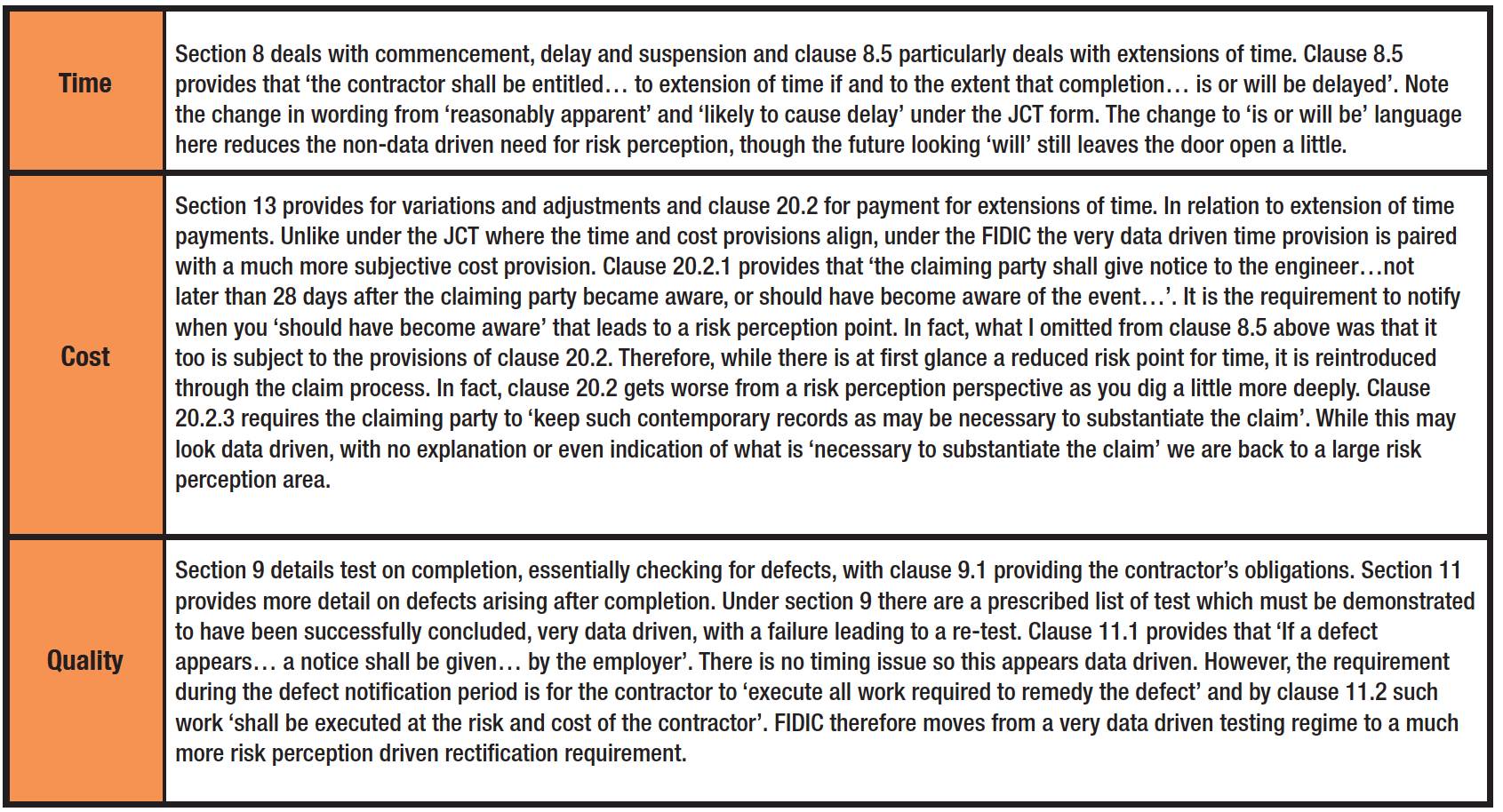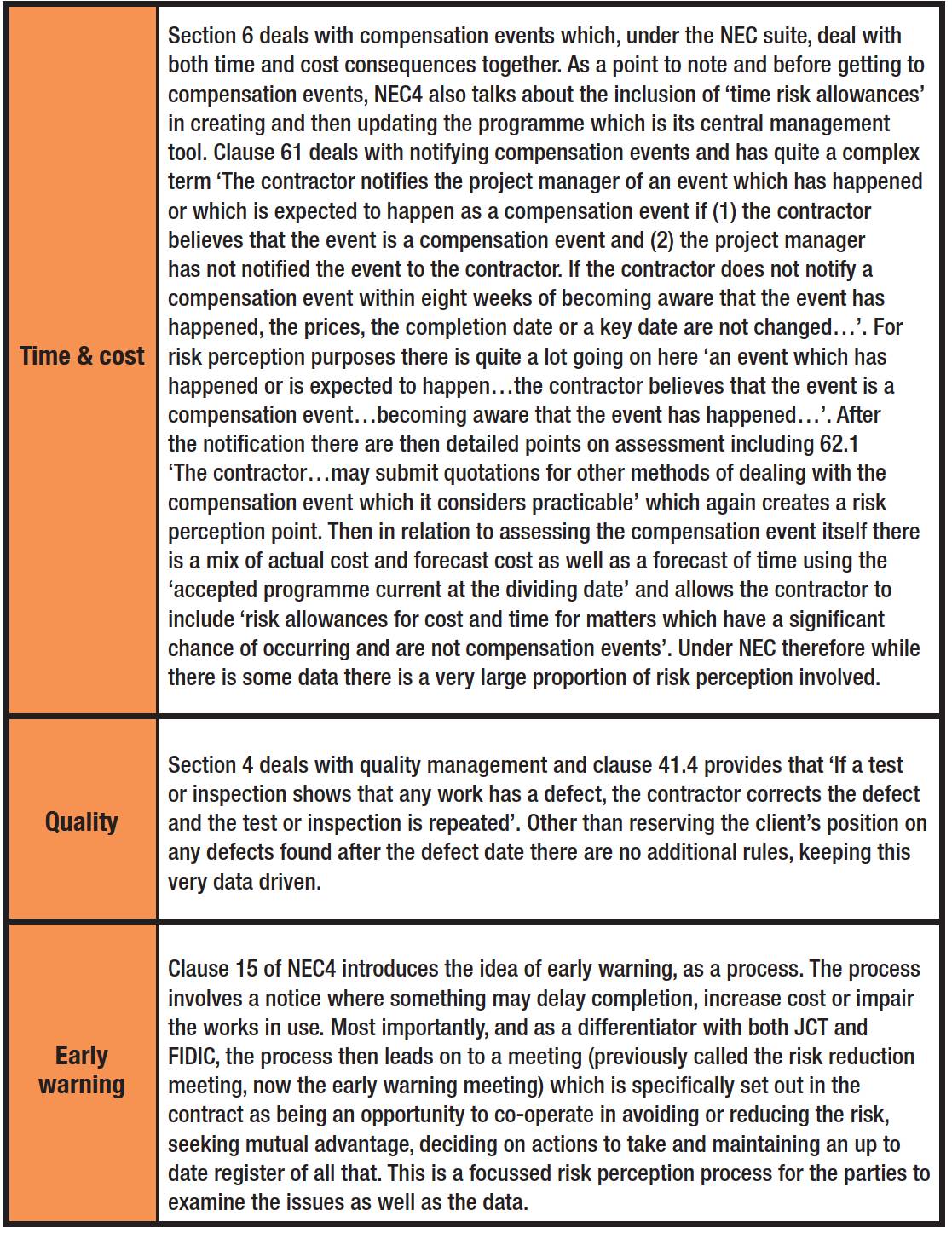Dispute avoidance through risk management
Rob Horne, Partner, Osborne Clarke

‘DANGER is Everywhere’ is the title of a series of children’s books following the exploits of Dr Noel Zone, the world’s foremost (and only) dangerologist. I loved reading these with my child when they were younger, but perhaps we need a few more dangerologists, or riskologists, in the construction industry.
Risk perception
Before you can manage it you have to see it. Why can’t some people (it often feels mostly found in the construction industry) perceive risk accurately? Outside of commercial risk in construction projects there is a well-established body of data on risk perception. The data has, for perhaps obvious reason, tended to focus on the impact of risk perception on making health and safety-related decisions, but the principles are very much relevant to the more commercial risk analysis which can make or break a project.
Perhaps we need a few more dangerologists, or riskologists, in the construction industry.Research in psychometrics has shown that risk perception is highly dependent on intuition, experiential thinking, and emotions. This would include an individual’s personality traits and previous experience, as well as contextual factors such as how the risk is framed when communicated or perceived and the perceived seriousness of the events and their consequences.
For each individual there is quite a complex perception web, and on any project there will be multiple people perceiving the risk and therefore likely to draw different conclusions. Added on to that melting pot of disparate individual perceptions, at the core of most risk perception are emotions, feelings and intuition.
We are not well equipped, as a species in the broadest sense, to vocalise an emotional reaction in a way easily understandable to someone in the same way it is felt. Our language is primarily a means of conveying information or data; ‘look, a tiger!’ is a very good transfer of information, however without substantially more, that language is not itself sufficient to perceive let alone analyse or manage risk.
In order to try and convey emotional responses and content we either go into long list of more data in the hope that the added data provides the context that makes up for the emotional absence or we put in place processes to enable a better transfer of information.
Contractual risk management
The ‘long list of data’ approach is, perhaps, the traditional concept of risk identification and management in construction, both within the four corners of a project and in terms of corporate reporting. However, do the most used standard forms offer an alternative? In a commercial construction contract sense, risk will generally fall into one of three headings; time, cost or quality. There are of course others such as property damage, health and safety etc but let’s just going to focus on time, cost and quality here for simplicity. Starting with the JCT 2016 design and build form the word ‘risk’ is used approximately 50 times but almost invariably in relation to insurance.

In summary then, the JCT approach identifies points at which information is to be shared and focusses on the transfer of data in consequence. It does not really give the parties tools to consider how the risk is being, or should be, perceived.
Turning to FIDIC, the 2017 Red Book mentions risk approximately 35 times but, while the word may be used a little less than in the JCT form above, the context is much broader; from the introductory notes explaining that one of the principles of the contract is to provide balanced risk sharing. At face value a different approach, but are there in fact tools then brought into the contract to enable that more dynamic focus on risk?

While FIDIC may vary in approach to JCT, neither form provides any guidance or tools to assist the parties to engage in risk perception, assessment or management activities.
While FIDIC may vary in approach to JCT, neither form provides any guidance or tools to assist the parties to engage in risk perception, assessment or management activities.
Lastly, NEC4 Engineering and Construction Contract, also published in 2017, mentions risk a little under 30 times, so the least of the three forms considered. Like FIDIC the application of the phrase is broad and includes ‘risk opportunity’ as a phrase and also talks about the pro-active management of risk in its preface.

At face value, many of the provisions of NEC4 are similar, in terms of risk perception playing a key part, to JCT and FIDIC. However, the early warning process provides a contractual mechanism or hook for tackling the perception issues and gaining alignment and understanding common to all.
Human dynamics and collaboration
What is written in the contract will not necessarily be what happens out on site. Some project teams go above and beyond the ideology of the contract while others seem to fight against it whenever possible, and indeed even when it is not possible, form a legal perspective. This can be wrapped up as the influence of human dynamics on the operation of the contract and delivery of the project. I was lucky enough to help write a book on this subject (Human Dynamics in Construction Risk Management) which became Global Construction Success (now published by Wiley).
Perhaps one way to look at this topic is that even if you have a hammer in your tool box there will still be some people who will use a screw driver to knock in a nail.
What is written in the contract will not necessarily be what happens out on site. Some project teams go above and beyond the ideology of the contract while others seem to fight against it whenever possible, and indeed even when it is not possible, form a legal perspective.While human dynamics, as applied to risk perception, risk management and dispute avoidance all seems negative, the human dynamic actually is the only thing that will make the contract processes work at all. It is the linking mechanism between risk perception and effective risk management which, together, enable dispute avoidance.
Turning back to our three contract forms JCT and FIDIC both set out to and do indeed provide a rule book for the interactions of the parties. They set out what each party must and must not do. However, that leaves a gap when the unknown happens. NEC on the other hand starts out by trying to address this by having its first two clauses say comply with the contract (10.1) but also act is a spirit of mutual trust and co-operation (10.2). This is the introduction and recognition of human dynamics in the contract process.
A managed risk is a managed dispute
Passive observation is not enough, neither is following a set of contractual rules. Managing a risk requires more. This is the heart of the matter. You cannot avoid a dispute without managing a risk, you cannot manage a risk without perceiving it, and you cannot gain that perception without understanding what drives the perception. Much as we might like to think it is, the perception of risk is not actually driven by data, rather data is the tool used to confirm the perception that has already been formed.
So to manage the risk put the data to one side (only to start with, you will defiantly need it later) and focus on why you are, or are not, seeing the risk in the same way as others. Find common ground, again before launching into the data or you will be swamped, buried, blinded pick your analogy but you won’t be dealing with the perceived risk anymore.
Passive observation is not enough, neither is following a set of contractual rules. Managing a risk requires more. This is the heart of the matter.Does that mean that record keeping is a waste of time and we should all just go with our feelings? No, not entirely at least. Make space for the feelings/intuition/gut instinct, which ever label you are most comfortable with, then look at the data. Think about and talk about the perception first to understand the risk in all its dimensions. Once you have your line drawing, fill in the colours with data to see the full picture.
Drawing the threads together
To have any hope of avoiding disputes you have to be able to accurately perceive and then manage risk as it arises. The earlier the risk is perceived and the management started, the more options are available to avoid uncontrolled escalation of the problem.
However, risk perception is complex ad different for everyone so human dynamic and interaction is critical; to management, of course but also to the early stage of risk perception. Translating that perception into something communicable in a meaningful way comes through dialogue (rarely if ever written notices) where emotional content or, if it is easier, gut instinct, can be analysed not solely through an accumulation of endless data.
Rob Horne, Partner, Osborne Clarke
